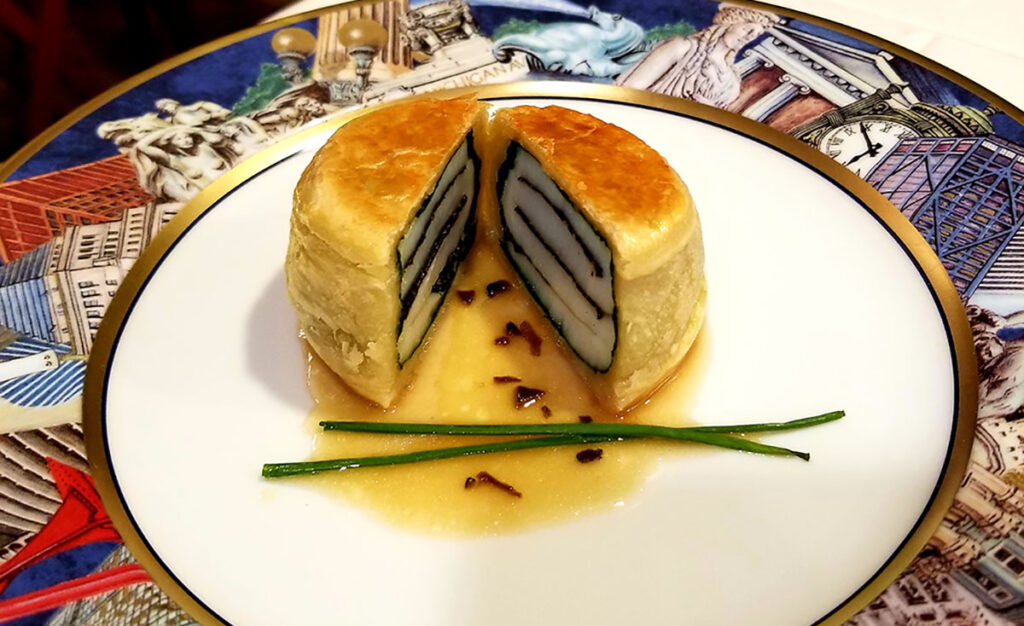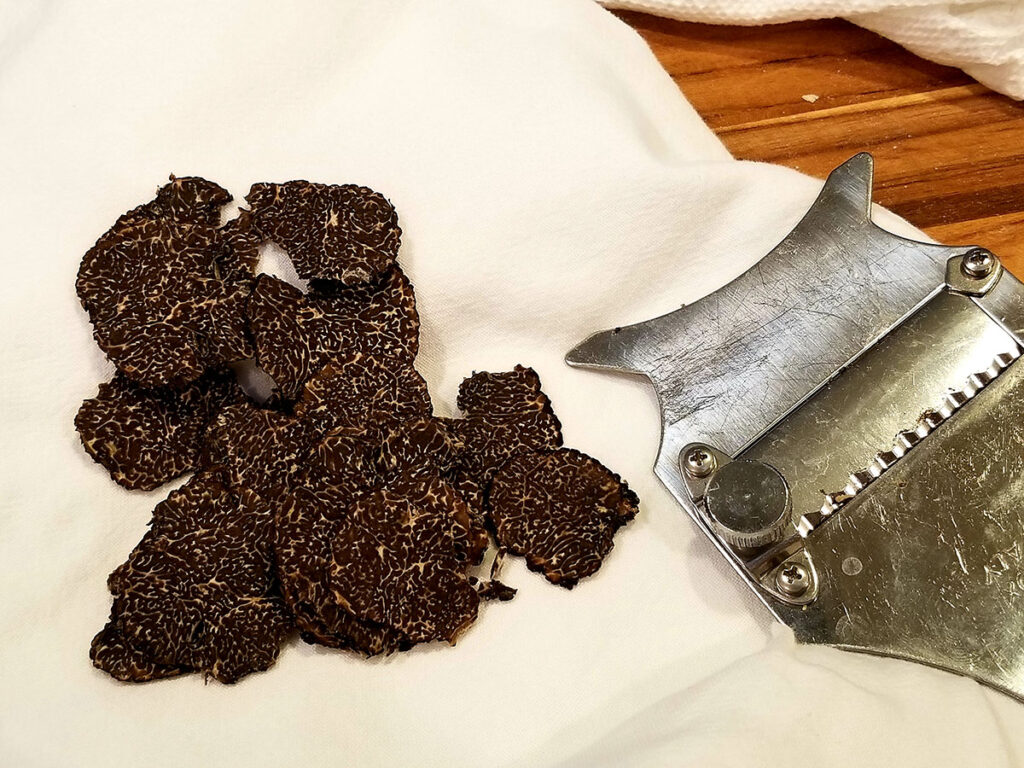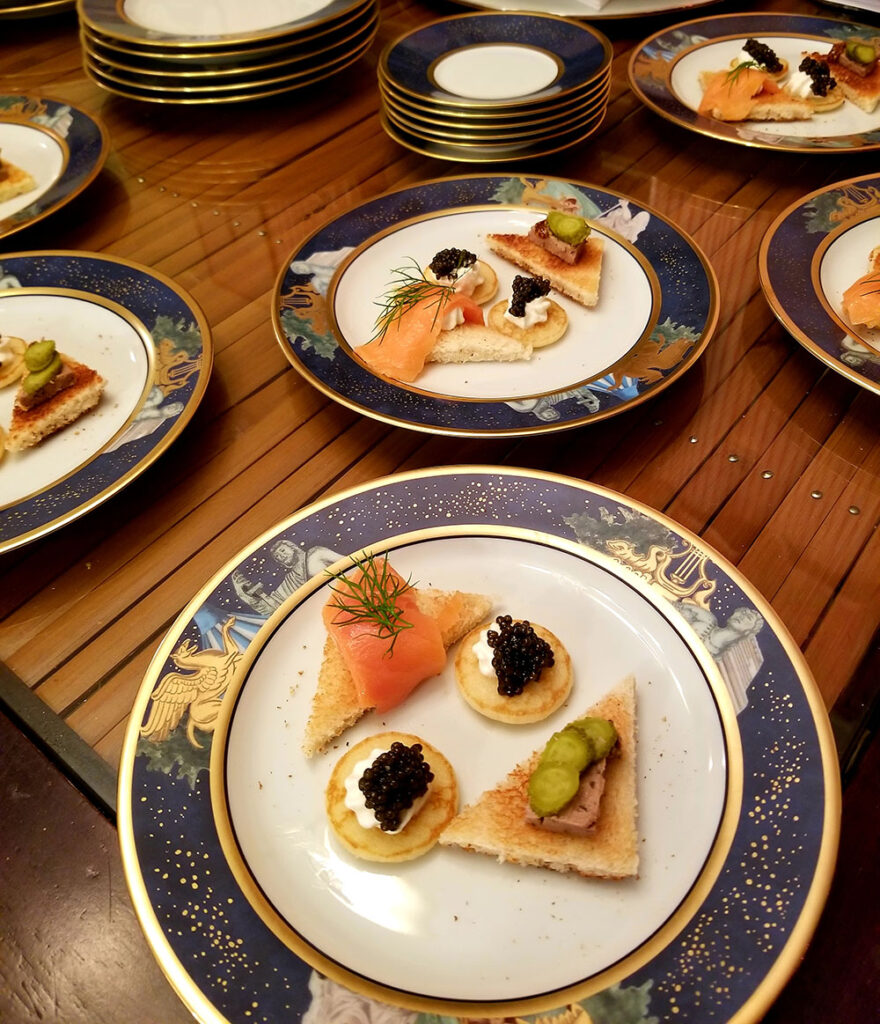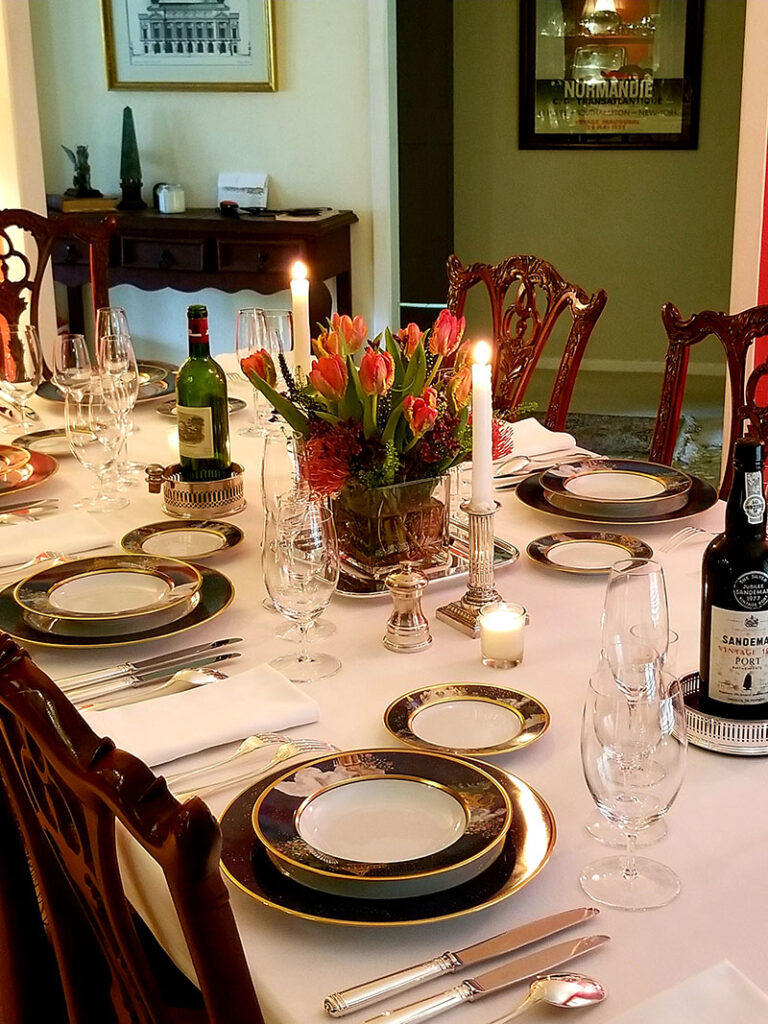 I have a very cherished food memory from when I was about ten years old. I’ve told it to folks many times over the years, but at a book signing recently, a local chef gave me a completely different perspective on it.
I have a very cherished food memory from when I was about ten years old. I’ve told it to folks many times over the years, but at a book signing recently, a local chef gave me a completely different perspective on it.
I had the great luck of being born into a family with terrific cooks – my mom’s food was amazing; even my grandfather and dad were pretty adept on a BBQ grill, but some of my best memories were of my grandmother Santos’s cooking.
I grew up with excellent carne guisada, charro beans, deeply flavored with salt pork, and amazingly fragrant, garlicky Spanish rice, among many other dishes. But my grandmother was also particularly good at Southern cooking. She would prepare delicious pan-fried pork chops with mashed potatoes and pork gravy (served with a salad with French dressing,) her meatloaf recipe continues to make converts to this day, and she made an excellent fried chicken. But a dish I particularly loved was her chicken and dumplings. I liked that dish so much I wanted to share it. So one day I invited several friends from school, home to try it.
Though we ate very well, my family was not into fancy food presentation – the good china gathered a lot of dust in the highest cabinets in the kitchen. For my friends though, I wanted everything to look special. I dug out some of the seldom-used china and set a nice table for them. I’ve always thought I was just doing what I saw on television, the fancy spread on all those family shows.
 When I told the story to the chef, he smiled widely and said, “you were playing restaurant!” I honestly felt bowled over. All my life, I thought I was just sharing good food. It never occurred to me that as a kid, I was already playing restauranteur.
When I told the story to the chef, he smiled widely and said, “you were playing restaurant!” I honestly felt bowled over. All my life, I thought I was just sharing good food. It never occurred to me that as a kid, I was already playing restauranteur.
Fast forward a few decades, and I’m still “playing restaurant” for friends, but the difference is I get to have a lot more fun with the atmosphere, the table settings, and even the music.
Together with the help of a few very talented cooks and an actual chef or two, I’ve had the pleasure of putting together some really memorable meals. As a souvenir, I even have the printed menus for some sixty-five meals hosted since the late 1990s.
 To put a little extra context to my food mania, I have a relatively large collection of fine and vintage cookbooks. The collection includes many works by Michelin-starred chefs, rare cookbooks from the Grand hotels of the last century, and books from the chefs of the great Atlantic Ocean Liners. A treasured find a few years back was a 1912 first edition of Auguste Escoffier menus. (Chef to kings)
To put a little extra context to my food mania, I have a relatively large collection of fine and vintage cookbooks. The collection includes many works by Michelin-starred chefs, rare cookbooks from the Grand hotels of the last century, and books from the chefs of the great Atlantic Ocean Liners. A treasured find a few years back was a 1912 first edition of Auguste Escoffier menus. (Chef to kings)
I love sharing the experience of a fine meal, and I really love the idea of food as a kind of time travel.
In 2012, one hundred years to the day, I recreated the last dinner on Titanic, making ten of the thirteen courses for twenty-four friends. They did me the great favor of dressing in white-tie (food aside, the ladies had more fun playing dress-up).
I’ve recreated the inaugural dinner from the 1935 French Ocean Liner, Normandie, and treated friends to a meal I had on the Orient Express many years ago.
In each case, I learned how to make things that are not very common anymore; clarified stocks, consommés, long-forgotten sauces, and rare desserts involving making my own flour.
So, I guess I don’t mind a good challenge.
 A recent New Year’s Eve dinner allowed me to make something I’d wanted to try for a very long time. The recipe was from a special twelve-course dinner at the famed Le Cirque restaurant prepared by Chef Daniel Boulud for the food critic of GQ magazine sometime in the 1980s.
A recent New Year’s Eve dinner allowed me to make something I’d wanted to try for a very long time. The recipe was from a special twelve-course dinner at the famed Le Cirque restaurant prepared by Chef Daniel Boulud for the food critic of GQ magazine sometime in the 1980s.
Although the full dinner menu sounded amazing, it would have to stay on the back burner along with other Herculean tasks like “Babette’s Feast.”
What had caught my attention was a beautiful picture of a dish called “Scallops in Black Tie.” It was a kind of scallop Wellington. I decided to tackle that as the challenge and build a classic menu around it as my NYE gift.
For dinners like this, I like to go at least a full seven courses, and I try to make the visuals really shine. Since much of the meal would be French-inspired, I opted for Bernardaud porcelain. While the large place plates are simple cobalt with splashes of gold stars, all the ancillary dishes focus on Parisian monuments. The dinner plates individually feature the architecture of twelve different world cities. A full complement of Christofle and vintage Cailar Bayard silver finished the table nicely.
In some of the very old menus I have, I kept coming across the phrase “Hors d’oeuvre Lucullus.” They didn’t seem to be a specific thing, but more of a category. I learned that the ancient Roman general ‘Lucius Licinius Lucullus’ was so famous for his banqueting that the word “lucullan” now means lavish, luxurious, and gourmet.
So, appetizers Lucullus meant anything over the top. I decided on small Petrossian blinis with sour cream and French caviar, toast points with truffled, duck pâté, and smoked salmon topped with dill. The first course was served with a favorite Henriot Champagne.
From the famous Lutèce restaurant in New York, I got the soup course. I’ve been making Chef André Soltner’s Shrimp Bisque for many years now – it’s a bit lighter than the traditional lobster version and is so much better with its garnish of sautéed shrimp. I paired the soup with a 12-year-old Don Zolio Amontillado. This particular Sherry drinks beautifully and compliments the cognac used in the soup.
 The fish course was the (happily successful) Scallops in Black Tie – Chef Boulud had taken large sea scallops and cut them horizontally. The layers are then filled with shaved black truffle. The whole is wrapped in blanched spinach and then in puff pastry cases. The scallops are then baked to a golden brown and served with a chicken jus reduced with truffle and vermouth.
The fish course was the (happily successful) Scallops in Black Tie – Chef Boulud had taken large sea scallops and cut them horizontally. The layers are then filled with shaved black truffle. The whole is wrapped in blanched spinach and then in puff pastry cases. The scallops are then baked to a golden brown and served with a chicken jus reduced with truffle and vermouth.
Chef Andy at Soto in Austin procured large, fresh Hokkaido scallops for me, and I had sourced fresh Italian truffles from D’Artagnan in New York. The truffles were a decent size, but most importantly, very fragrant.
The trick seemed to keep everything very cold. As soon as the pastry warmed too much, it was nearly impossible to make the neat little packages, and using spinach as wrapping paper will not happen again soon. The results though, were worth the wait and effort. The scallops were picture perfect and a brilliant combination of flavors.
Since we had started with Champagne, I paired the scallops with a 2016 Patient Cottat Sancerre. The gooseberry and grapefruit acidity in the wine was a nice counterpoint to the scallops and the rich butter in the puff pastry.
The main course was a little less creative, but it’s hard to beat a well-made beef tenderloin with a bordelaise sauce. Fondant potatoes cooked in chicken stock, butter, and thyme, and sautéed asparagus made for excellent sides.
For the wine, I chose a 2006 Chateau Lagrange, Saint-Julien. The most common description for this third growth Bordeaux is “finesse.” Medium weight with black fruit, pencil shavings, and the smallest hint of vanilla, it was a great wine with the beef.
I remember reading that the American custom of a salad before dinner was a restaurant invention in the mid-1900s. Restaurants needed something to keep customers busy while their food was being prepared, and so the salad was moved ahead of the main course.
For our dinner, we had a small, simple salad after the main as a perfect palate cleanser.
For dessert, I selected another recipe from Le Cirque. Many years ago, the New York Times printed their popular crème brûlée recipe, and it’s the one I’ve used ever since. (it’s straight forward, but from experience, not forgiving of shortcuts.)
In Sommelier training about a decade ago, I learned that you can pair sweet wines with sweet desserts and not yield too sweet an effect.
To that end, I paired the lovely custards with a 2014 Chateau Doisy-Vedrinés Sauternes. The wine had aromas of honey and orange zest. The palate had enough acidity to brighten the sweetness, and the flavors of lemon, honey, and orange peel were wonderful.
A French tradition I like very much is to serve fruit at the end of a meal. Though it may seem like too much, bit by bit, grapes are eaten over long conversation, cherries, and sometimes peaches vanish just the same.
We finished our meal with a 1977 Sandeman port and coffee, and with just a few minutes to spare, we toasted the New Year with an “André Clouet 1911” Champagne.
We finished our evening with some dancing and a bit more Champagne – I like to think that the ten-year-old me would have been over the moon.
So now I’ve been “playing restaurant” for the better part of forty years. My friends kindly indulge me as sometimes the work can be a little overwhelming, but in the end, when we’ve enjoyed an extraordinary experience, some fine wine, and a great food memory was made – it makes the work so worthwhile.
Richard Arebalo
OTL Features Editor